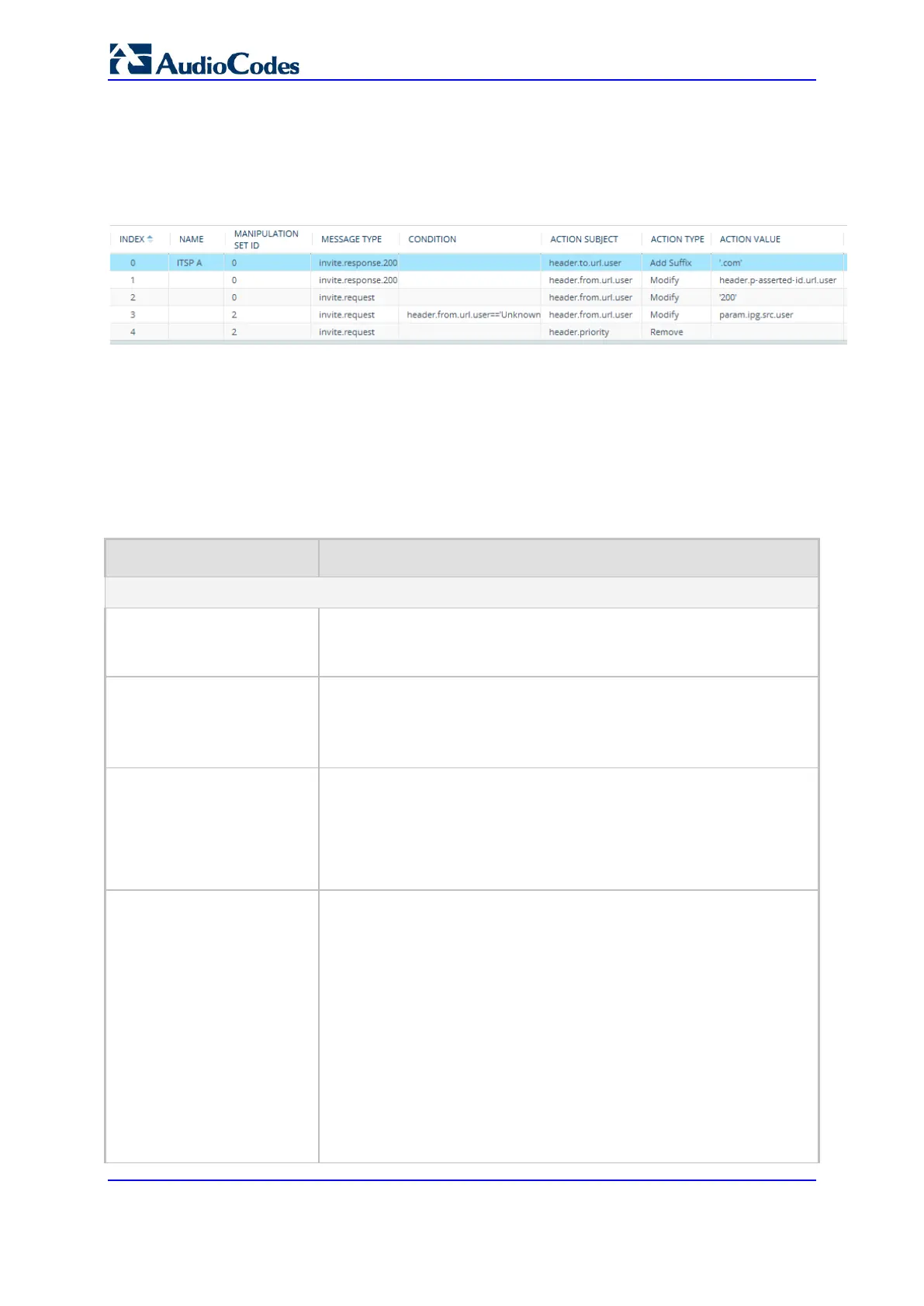User's Manual 372 Document #: LTRT-27045
Mediant 1000B Gateway & E-SBC
3. Configure a Message Manipulation rule according to the parameters described in the
table below.
4. Click Apply.
An example of configured message manipulation rules are shown in the figure below:
Figure 18-4: Example of Configured Message Manipulation Rules
Index 0: Adds the suffix ".com" to the host part of the To header.
Index 1: Changes the user part of the From header to the user part of the P-Asserted-
ID.
Index 2: Changes the user part of the SIP From header to "200".
Index 3: If the user part of the From header equals "unknown", then it is changed
according to the srcIPGroup call’s parameter.
Index 4: Removes the Priority header from an incoming INVITE message.
Table 18-2: Message Manipulations Parameter Descriptions
Parameter Description
General
Index
[MessageManipulations_Ind
ex]
Defines an index number for the new table row.
Note: Each row must be configured with a unique index.
Name
manipulation-name
[MessageManipulations_Ma
nipulationName]
Defines an arbitrary name to easily identify the rule.
The valid value is a string of up to 16 characters.
Manipulation Set ID
manipulation-set-id
[MessageManipulations_Ma
nSetID]
Defines a Manipulation Set ID for the rule. You can define the same
Manipulation Set ID for multiple rules to create a group of rules. The
Manipulation Set ID is used to assign the manipulation rules to an IP
Group (in the IP Groups table) for inbound and/or outbound
messages.
The valid value is 0 to 19. The default is 0.
Row Role
row-role
[MessageManipulations_Ro
wRole]
Determines which message manipulation condition (configured by the
'Condition' parameter) to use for the rule.
[0] Use Current Condition = (Default) The condition configured in
the table row of the rule is used.
[1] Use Previous Condition = The condition configured in the first
table row above the rule that is configured to Use Current
Condition is used. For example, if Index 3 is configured to Use
Current Condition and Index 4 and 5 are configured to Use
Previous Condition, Index 4 and 5 use the condition configured
for Index 3. A configuration example is shown in the beginning of
this section. The option allows you to use the same condition for
multiple manipulation rules.
Note:
When configured to Use Previous Condition, the 'Message Type'

